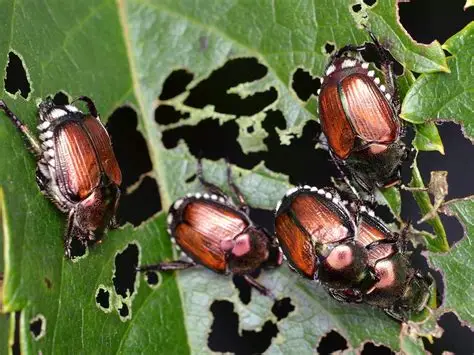
How to Treat Japanese Beetles
Learning how to treat Japanese beetles is something nobody would want to do but it becomes necessary sometimes because are one of the most destructive pests in North America, capable of severely damaging both lawns and ornamental plants.
These invasive insects feed on over 400 plant species, preferring favorites such as roses, grapevines, crabapples, and birch trees. Their life cycle allows them to persist year after year, with grubs feeding on turfgrass roots in the fall and spring before emerging as adults in the summer.
While DIY methods exist, effectively managing Japanese beetles requires a well-timed, multi-step approach that many homeowners find overwhelming. Hiring a professional landscaping company ensures that treatments are applied at the right time, using the best products and methods to keep your lawn and plants healthy. Below, we’ll explore why professional help is the best way to handle Japanese beetles and the strategies they use to control infestations.
Japanese beetles are found in parts of Wisconsin, particularly south of a line from Green Bay to Wausau to Eau Claire. They are becoming more problematic in some areas of the state.
Understanding the Japanese Beetle Life Cycle
Like all insect control, understanding the life cycle of Japanese beetles is crucial to effectively reducing their population. These pests have a 12-month life cycle, meaning that if you don’t target them at the right time, they will keep coming back.
- Late July–Early August: Adult beetles lay eggs in the soil.
- August–September: Grubs hatch and begin feeding on turfgrass roots.
- October–April: Grubs burrow deep into the soil to survive the winter.
- April–May: Grubs resurface and continue feeding on grassroots.
- June: Grubs enter the pupal stage.
- Early July: Adults emerge and begin feeding on plants for 4–6 weeks.
- Because they have two active feeding periods (spring/fall as grubs and summer as adults), a single method of control is not enough. Professionals time treatments precisely to target the beetles at different stages of their life cycle.
Can You DIY Japanese Beetles?
You can try to learn all about Japanese Beetles if you’d like to manage them yourself. Professional landscapers use properly timed applications of insecticides to significantly reduce Japanese beetle populations.
- Turf insecticides in late July/August target grubs before they become adults, preventing a new generation from emerging the following summer.
- Turf insecticides in April/May control grubs that survived the winter, stopping them before they can pupate.
- Foliar sprays in early-to-mid July protect beetle-favorite plants and kill adults before they lay eggs.
- Since June/early July treatments are ineffective (as beetles are in the pupal stage and not feeding), professionals know when and how to apply treatments for maximum effectiveness.
- Both grubs and adult beetles cause serious damage. Grubs destroy lawns by feeding on the roots, leading to large dead patches that may not be visible until stress conditions occur. Adult beetles skeletonize leaves, making plants look defoliated and weakened.
- High concentrations of either can devastate your yard, but professional landscaping companies know how to combat both simultaneously.
Avoiding Common DIY Mistakes
Many homeowners try DIY solutions like beetle traps, but these can actually worsen the problem by attracting more beetles to your yard. Additionally, overly irrigated and well-maintained lawns may unknowingly invite more beetles to lay eggs, leading to higher grub populations.
Comprehensive Lawn and Garden Care
Japanese beetle management is only one part of maintaining a healthy landscape. You may want to simply have one company manage all of these challenges at once.
- Improve soil health to make your lawn more resistant to pests.
- Recommend beetle-resistant plants to reduce infestations naturally.
- Provide seasonal maintenance, including fertilization and aeration.
- A company’s holistic approach ensures your entire yard thrives, not just the areas affected by beetles.
Additional Ways to Reduce Japanese Beetle Damage
Here are some additional strategies can help minimize their impact:
- Grow Beetle-Resistant Plants: Certain plants, such as garlic, catnip, and leeks, naturally repel Japanese beetles.
- Remove Damaged Leaves: Beetles are attracted to damaged plants, so pruning affected areas can help prevent further infestation.
- Avoid Overwatering: Japanese beetles prefer to lay eggs in well-irrigated, healthy turf, so reducing watering in late summer may discourage egg-laying.
- Encourage Natural Predators: Birds, nematodes, and beneficial insects can help keep beetle populations in check.
Japanese beetles are a persistent and destructive pest. From targeted turf insecticide applications to protective foliar sprays, professionals can reduce beetle populations at every stage of their life cycle.
